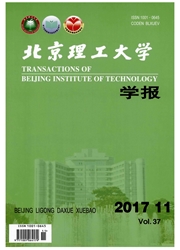

 中文摘要:
中文摘要:
基于实验结果评价了一种用密度函数修正的RNGκ-ε湍流模型在云状空化流动计算中的应用.采用不同的修正系数,分别计算了绕Clark—y型水翼云状空化流动,获得了随时间变化的空化形态和升、阻力等流场及动力特性.通过与实验结果的对比表明,修正后的模型可以更准确地捕捉云状空化区域的空穴形态和空泡脱落的非定常细节;密度函数中指数n的选取对计算所得的空穴长度和升阻力均有影响,然而对流场动力特性的主要频谱分布影响不明显.
 英文摘要:
英文摘要:
To assess a modified RNG κ-ε turbulence model, the cloud cavitating flow around a Clark-y hydrofoil is investigated using RNG κ-ε turbulence model with a modified turbulence viscosity coefficient, and the coefficient is related to the vapor and liquid densities in the cavitating region. The time evolutions of the shape of cloud cavities, the lift and drag force around the hydrofoil have been obtained, and compared with experimental results. It is shown that the modified model can predict successfully the characteristics of cavitation and the detailed process of the cavitation shedding. Values of n in the modified coefficient are found to have a strong influence on the cavity length, the vapor volume, the lift and drag force, but no significant effect on the frequency distribution of the dynamics around the foil is observed.
 同期刊论文项目
同期刊论文项目
 同项目期刊论文
同项目期刊论文
 期刊信息
期刊信息
